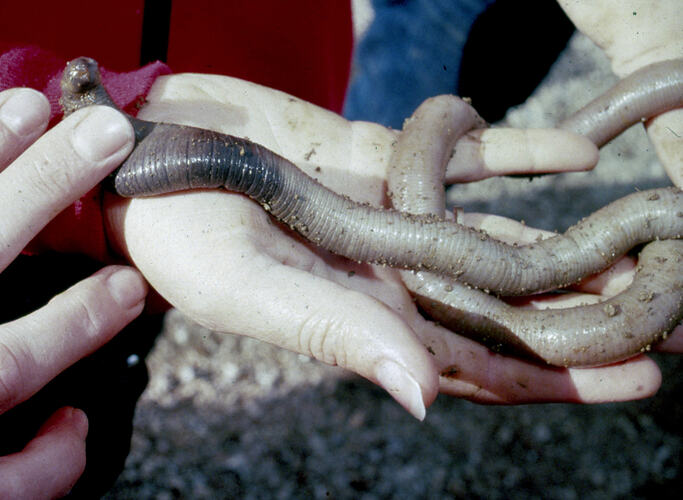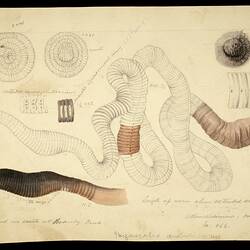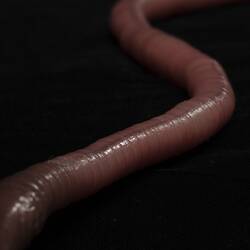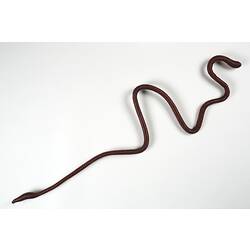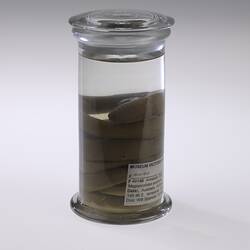General Description
This is one of the largest worms in the world. In the 1870s, a specimen was sent to the National Museum of Victoria: its discoverers thought it was a new species of snake! Worms of up to 3 m have been reported, but museum staff have failed to find any specimens approaching this length. The average length is 80-100 cm, with 300-500 body segments. However, as these worms can expand and contract, they are usually measured by weight: the average adult weight is 200 g.
Biology
Like most worms, this species lives underground and is usually only seen when flushed to the surface after heavy rain. They feed primarily on roots and organic matter in the soil, creating a complex system of permanent burrows 0 to 1.5 m below the surface. In spring-summer, individuals produce a single large amber-coloured egg (4-7 cm long). The egg contains a single young and takes over a year to hatch. The baby worms are 20 cm long at hatching and take 4-5 years to mature. The worms move by expanding and contracting their bodies. This movement creates a loud gurgling sucking noise, which can be used to detect the presence of these worms under the soil. Giant Gippsland Earthworms have a fragmented distribution. Habitat disturbance across this distribution, combined with their slow developmental and reproductive rates, makes this species highly susceptible to threats.
Distribution
Endemic to an area of approximately 40,000 ha in the western Strzelecki Ranges of south and west Gippsland, Victoria, where its distribution is patchy.
Habitat
Underground (0-1.5 m deep) in blue-grey clay, close to water courses, soaks and springs. Their range is now primarily cleared farmland.
More Information
-
Animal Type
-
Animal SubType
-
Brief Id
Length 80-100 cm, diameter 2 cm; 300-500 body segments; head and first third of body dark purple, remainder pinkish grey.
-
Maximum Size
200 cm
-
Diet
Organic matter
-
Endemicity
-
Conservation Statuses
CITES: Not listed, FFG Threatened List: Endangered, EPBC Act 1999: Vulnerable, IUCN Red List: Endangered
-
Taxon Name
-
Scientific Author
McCoy, 1878
-
Common Name
Giant Gippsland Earthworm
-
Phylum
-
Class
-
Family
-
Genus
-
Species Name
australis
